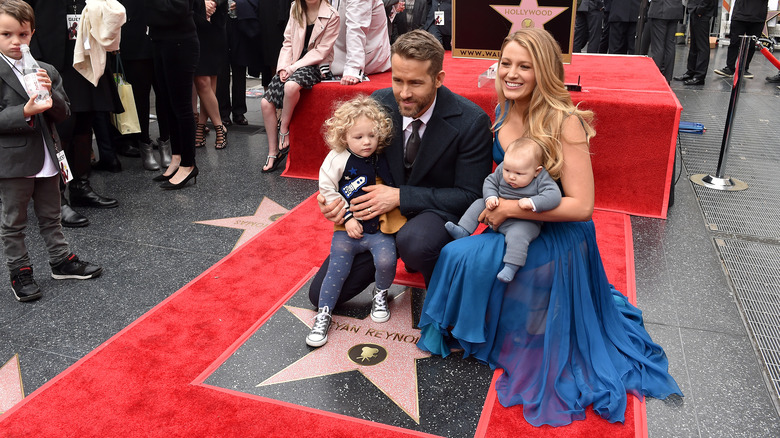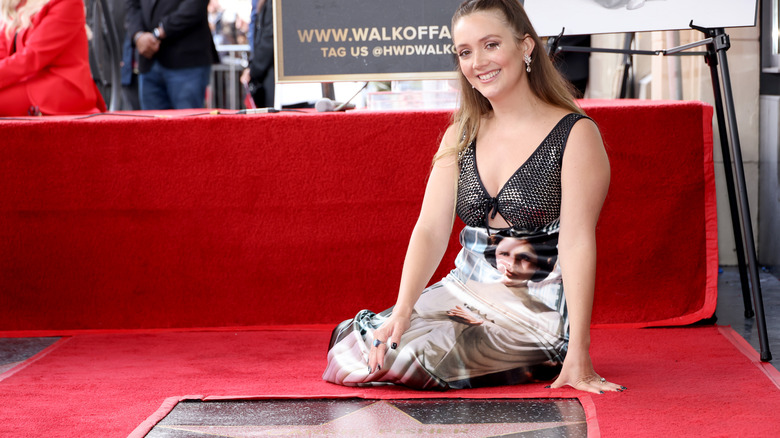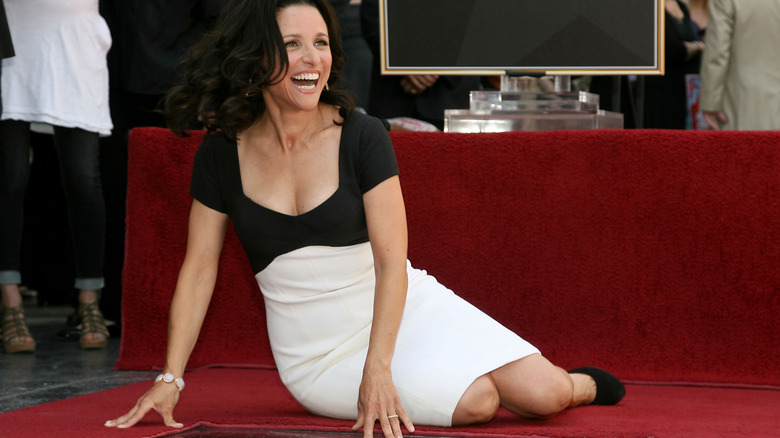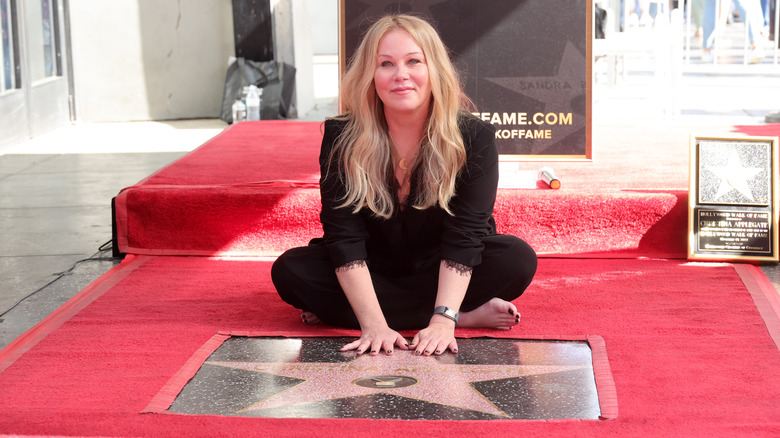The Hollywood Walk Of Fame: The 5 Weirdest Rules Stars Must Follow
The Hollywood Walk of Fame is one of the most famous attractions tourist attractions in Los Angeles and has been ever since its creation in 1960 — and even after all these years, it’s still a major honor within the entertainment industry to receive a star. With plenty of categories represented — including actors, directors, musicians, and even fictional characters — the walkway on Hollywood Boulevard (which spills over onto the nearby Vine Street) is a who’s who of the Hollywood elite and remains a major sight in the city. So what does it take to even get a star on the Walk of Fame … and what rules do potential recipients have to follow?
Yes, that’s right; people hoping to earn a star and participate in a ceremony commemorating their achievement have to follow a fair number of rules and adhere to a pretty strict procedure in order to make that happen. Earlier this year, People Magazine spoke to Ana Martinez, one of the Walk of Fame’s executive producers, who dished on what exactly stars need to do in order to permanently install their name in this internationally renowned spot, and it’s far more intense than you might think. Here are just some of the strange, specific rules industry folks need to follow to earn a star on the Hollywood Walk of Fame.
Celebrities are chosen to get stars by a specific committee
First of all, who even decides on a star’s Walk of Fame-worthiness? According to Ana Martinez, a potential recipient needs at least five years in the entertainment industry in order to qualify, and they’re required to do some form of what Martinez refers to as “philanthropic work.” Interestingly, anyone can nominate a star, whether it’s their own team or even a fan club, but once the applications are in (which Martinez says is usually a couple hundred a year), a group of Walk of Fame star-holders from each major category come together and help decide who gets a star that year. Past committee members have included Vanessa Williams, Kristin Chenoweth, and LL Cool J, and Martinez and President and CEO of the Hollywood Chamber of Commerce Steve Nissen choose these commitee members for each cycle.
“Each committee member who has their own star represents their category,” Martinez revealed. “They get the information ahead of time and then we meet in June and then they go through all the applications. And then we go back and forth and discuss, and that’s when they make their selections.”
Beyond that, Martinez said the makeups of the commitees have changed a lot recently … largely because she helped pioneer a system where fellow entertainers can make the decision. “It used to be executives, like a movie studio head or a record label person, but then I talked to my boss at the time, like ‘Why don’t we have Walk of Famers and they can vote for their peers?’ It’s worked out amazingly,” she said. “We’ve had some really good people.”
Stars have to accept their nominations … and pay for their spot
This might sound obvious, but still worth noting: after their nomination is determined by the committee, stars vying for a Hollywood Walk of Fame star have to accept the nomination before any progress can be made on the ceremony and physical star itself. This, Ana Martinez says, is due to the fact that one year, a fan nominated music legend Bruce Springsteen … who didn’t want the star at all, as the fan hadn’t consulted him in any way. This apparently led to an extremely awkward situation.
“We announced it and he did not want it,” Martinez recalled. “So I created what’s called the Springsteen clause, which [means] you now have to sign off on it. Because otherwise, it’s not fair to those who do want it.”
Stars also have to pony up a decent amount of cash in order to fund their star; as Martinez points out, there’s a lot that goes into the entire process. “I have to file for permits,” she said. “We pay the police for off-duty officers for security, the fire department, our production costs, the making of the star, barricade, security, photography. It’s a tourist attraction — it’s not all done for free, but it’s a free event for the fans to attend.” The fee to apply in the first place is $250, and stars also pay a “sponsorship fee” that goes for the low, low price of $75,000 (which helps pay for maintenance and other relevant costs).
Celebrities can be nominated after they die — and get a star
According to Ana Martinez, stars can also be nominated after their deaths … and even receive a posthumous star. There is a rule regarding that too, though; there’s a two-year grace period required by the producers of the Hollywood Walk of Fame, which Martinez says is a “mourning period” for the lost celebrity. The surviving family members of the late celebrity are then the ones who have to give their consent to the nomination.
Sometimes, as Martinez told the outlet, giving a celebrity a posthumous star is a no-brainer. After “Star Wars” legend Carrie Fisher suddenly passed away from a cardiac event in 2016, Martinez says that they had to wait, but that Fisher ultimately got the star she deserved, with her daughter Billie Lourd there at the ceremony to accept the honor on her mother’s behalf. “Carrie Fisher, when she passed away, people were like, ‘Oh my God, we have to do this,'” Martinez said. “It just puts a lot of pressure on the committee. So they waited. But her brother nominated her and she got it. It was unanimous.”
Then there are some celebrities who passed away and still haven’t gotten their stars — and in the case of two, they were offered stars before their deaths. Martinez expressed her hope to People that both Whitney Houston and Prince will get their stars posthumously; Prince refused the honor while he was alive by saying he wasn’t “ready,” and Houston accepted but never chose a date for her ceremony.
People can get more than one star — but they do take a few days to actually make
Making the physical star that goes on the Hollywood Walk of Fame is its own labor of love, as Ana Martinez revealed — because it takes a while to actually craft them. “For the star itself, they have to make it four days in advance because it has to cure,” Martinez said. “They’re made of terrazzo, it’s an Italian marble. Once it’s made, my star maker has to send me the name plate so I can proof it. And then after I approve it, he covers it up and then we wait three to four days for it to dry. And then the morning of the ceremony, it’s polished.”
Apparently, though, that proofing system doesn’t always work; when “Veep” and “Seinfeld” star Julia Louis-Dreyfus got her star in 2010, her name was misspelled. Martinez didn’t specify which part of the Emmy-winner’s name had a typo, but she did say they gave her a commemorative gift after they redid her star correctly: “We ended up giving her that chunk with the misspelled name and she did a little video about it. It was pretty funny.”
Despite the amount of work it takes to make a star, some celebrities do have multiple stars across different categories; Gene Autry has one in each category, and celebrities like Frank Sinatra have three. “Ron Howard [is] the most recent one,” Martinez said. “He got it in 1960 for being Opie on The Andy Griffith Show and then for motion pictures as a huge director. So he’s got two.”
Celebrities can only make some choices about their stars and ceremonies
The ceremony where a celebrity or entertainer receives their star is always pretty special, especially because co-stars and famous friends pretty much always show up to give speeches and lend their support. (A recent memorable and tear-jerking ceremony was held for Christina Applegate, the “Dead to Me” star who is suffering from multiple sclerosis and who has largely retired from performing as a result of her illness.) Ana Martinez says that celebrities get a say in who appears at their ceremony, and those people then prepare a speech.
Here’s one thing that celebrities can’t choose about their Hollywood Walk of Fame stars, though: the location of the star. Each star, as Martinez put it, “is a registered historic landmark, once a star has been added to the Walk, it is considered a part of the historic fabric of the Hollywood Walk of Fame … Because of this, we have never removed a star from the Walk.” Plus, as Martinez revealed, once a star is placed, it’s quite literally set in stone. “Some people think we do them in one spot and then we move them. No, they’re done at the location that I select [and] they stay there.” Makes sense, but there are probably some stars out there who put up some sort of fuss over where their star was precisely placed.
The Hollywood Walk of Fame is one of Los Angeles’ most stunning landmarks … and now, if you visit, you’ll understand how much work has gone into crafting it.







